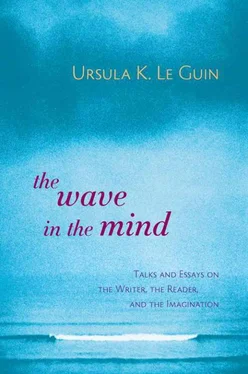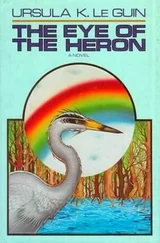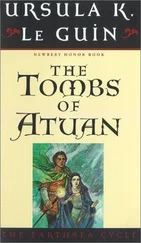Even on television you can see that people are different. Sometimes.
I’ll talk about four common varieties of the Unquestioned Assumption and explore a fifth one in more detail.
1. WE’RE ALL MEN.
This assumption turns up in fiction in endless ways: in the belief, borne out by the entire substance of the book, that what men do is of universal interest, while women’s occupations are trivial, so that men are the proper focus of story, women peripheral to it; in women being observed only as they relate to men, and their conversation reported only as it relates to men; in vivid descriptions of the bodies and faces of sexually attractive young women, but not of men or older women; in presuming the reader will welcome misogynistic statements; in pretending the pronoun he includes both genders; and so on.
This assumption went almost unquestioned in literature until fairly recently. It’s still fiercely upheld as legitimate by reactionary and misogynist writers and critics, and is still defended by people who feel that to question it is to question the authority of great writers who accepted it in good faith. It should by now be unnecessary to say that such defensiveness is unnecessary. But alas, the New York Times and many academic bastions and bulwarks are still staunchly protecting us from the rabid hordes of man-eating bra-burners out to diminish Shakespeare and demonise Melville. How long will it be, I wonder, before these brave defenders notice that feminist criticism has vastly enriched our reading of such authors, by bringing to an area of darkness and denial the mild, honest illumination of cultural relativism and historical awareness?
2. WE’RE ALL WHITE.
This assumption is implied far, far too often in fiction by the author’s mentioning the skin color only of nonwhite characters. This is to imply unmistakably that white is normal, anything else is abnormal. Other. Not Us.
Like misogyny, actual racial contempt and hatred, often expressed with appalling brutality and self-righteousness, is so frequent in older fiction as to be inescapable. There the reader can only handle it with—again—historical awareness, which asks for tolerance, though it may or may not lead to forgiveness.
3. WE’RE ALL STRAIGHT.
—“of course.” All sexual attraction, any sexual activity in the story, is heterosexual—of course. This Unquestioned Assumption applies to most naive fiction, even now, whether the naivete is deliberate or not.
Straightness as dominant in-group may also be implied by the nudge-and-snigger. A negatively stereotyped fag or dyke is presented by the author with a verbal wink, an invitation to more or less hateful laughter from the reader.
4. WE’RE ALL CHRISTIAN.
Writers who have not noticed that Christianity is not the universal religion of humankind, or who believe that it is the only valid religion of humankind, are likely to take it for granted that the reader will automatically and appropriately respond to Christian imagery and vocabulary (the virgin mother, sin, salvation, and so on). Such writers take a free ride on the cross. In fifteenth-century Europe, this assumption was forgivable. In modern fiction it is, at best, unwise.
A particularly silly sub–in-group is made up of Catholic or ex-Catholic writers convinced that all readers went to parochial school and are obsessed, one way or another, with nuns.
Much more frightening than these are the writers whose description of non-Christian characters exhibits their conviction that outside Christianity there is no spirituality and no morality. Special grace extended to the occasional good Jew or honest unbeliever merely includes that individual in the Christian exclusivity. Monotheistic bigotry beats all.
The fifth group that assumes itself to be universal deserves special examination because it’s not often talked about in the context of fiction. The assumption that we’re all young is a complex one. Our experience of age changes as our age changes—constantly. And age-prejudice runs both ways. Some people carry their in-group right through life: when they’re young they despise anybody over thirty, when they’re middleaged they dismiss the young and the old, when they’re old they hate kids. Eighty years of prejudice.
Men, whites, straights, and Christians are privileged groups in American society; they have power. Youth is not a power group. But it is a privileged or dominant one in college, in fashion, film, popular music, sports, and the advertising that sets so many norms for us. The tendency at present is to adulate youth without respecting it and sentimentalise old age while despising it.
And to segregate both. In most social situations and at work, including educational work, adults, except for a few designated as caretakers or teachers, are kept segregated from children. The interests of the young and the interests of adults are supposed to be entirely different. Nothing but “the family” is left as a meeting ground, and though politicians, preachers, and pundits prate about “the family,” few seem to want to look at what it consists of. Many contemporary families consist of one adult and one child, a subminimal social group, with a single-generation age spread. Divorce and remarriage can create large semidispersed families, but even children with a slew of parents, step-parents, and step-siblings often don’t know anybody over fifty. Many older people, by choice or perforce, have no contact with children at all.
I don’t know why this curious skewing and segregation of society by age should induce writers to use a youthful viewpoint as if it were the only one; but a great many of them do. The unquestioned assumption is that all readers are young, or identify with the young. The young are Us. Older people are Them, outsiders.
And to be sure, every adult was a child, was an adolescent. We’ve been there. We shared the experience.
But we aren’t there now. Most readers of adult fiction are adults.
A great many book readers are also parents or accept parental responsibility in one way or another. This means that though they may identify with the young, their identification isn’t simple. It’s extremely complex. It’s not a belonging. Nor is it mere recollection. Adults who accept their social or personal responsibility towards children and young people, and who don’t need to deny that they were themselves young, have a double or multiple point of view, not a single one.
To write from the child’s or adolescent’s point of view is of course natural in books written for children or young adults. In books written for adults it is a valid and often powerful literary device. It may simply fulfill nostalgic yearnings to be young again; but the innocent viewpoint is inherently ironic, and in a wise writer’s hands may imply the double vision of the adult with particular subtlety. In much recent fiction written for adults, however, the child’s vision is not used ironically or to increase complexity, but is, implicitly or openly, valued over the depth of vision of the adult. This is nostalgia with a vengeance.
In such books an absolute division between adult and child is made and a judgment is based on it. Adults are perceived as less fully human than children or young people, and the reader is expected to accept this perception. Parents and authority figures of any kind are presented without compassion or comprehension as automatic enemies, all-powerful wielders of arbitrary power. There may be a few saintly, all-comprehending exceptions proving the rule—powerless old folks, grandparent figures rich in the Primitive Wisdom of Another (note the word) Race. Sentimentality fawns on oversimplification.
Читать дальше




